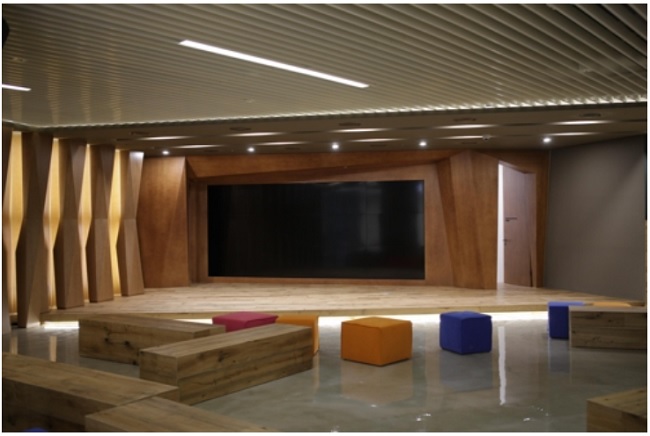
Korea University has taken the idea of rethinking the concept of the traditional library even further. Last May, the school opened the CJ Creator Library (CCL) on its campus grounds.(Image:Korea University)
SEOUL, Jul. 24 (Korea Bizwire) — Rows of shelves crammed with books that crisscrossed rooms like walls are now a thing of the past – at least when it comes to university libraries in South Korea.
Universities are doing away with rows upon rows of musty books, and pivoting towards current social trends as they attempt to convert libraries into study spaces suggestive of cafés. Their belief is that by doing so, they are encouraging creativity, and emphasizing a sense of personal liberty.
Hanyang University is opening the “Lee Jong Hoon Lounge” on the first floor lobby of its main library after extensive reconstruction and remodeling.
Areas so silent one could hear a pin drop will now echo with voices engaged in passionate debate, emulating the admired Jewish Talmudic study tradition of “Havruta”. The lounge will also hold a resting area for students, a multimedia room, and a study room specifically reserved for university startup clubs.
Seoul National University (SNU) is also planning on getting into the remodeling game. It announced its intention to open a “Maker Space”, an area outfitted for a variety of multimedia activities that would enable filming and editing of video footage and other aspects of film production.
A spokesperson for SNU explained the school’s motivations for the area as “an attempt create a library that would go a step beyond being merely a designated study area to a place that can foster creativity.”
Korea University has taken the idea of rethinking the concept of the traditional library even further. Last May, the school opened the CJ Creator Library (CCL) on its campus grounds. At the CCL, students can find single room studios that support a diversity of multimedia options. There is also a resting area where students can even lie down to take a break.
Not everyone regards the new libraries in a positive light, regardless of the intention to engender an environment of creativity. One staff member of a university based in Seoul mentioned that “there have been complaints from students about the fact that there are fewer study areas,” and that the university “is looking into ways study areas might be created in places that are not the library.”
by Lina Jang (linajang@koreabizwire.com)






